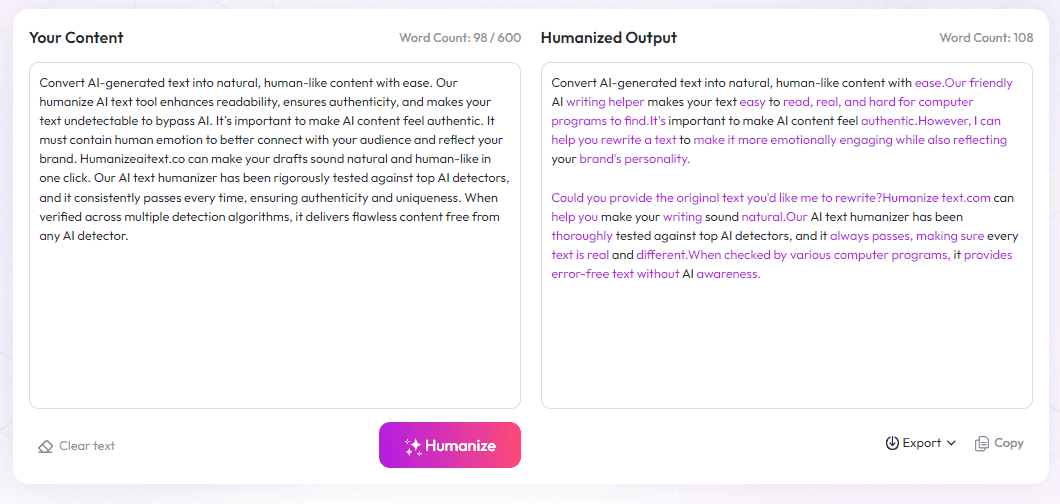Table of Contents
If you're trying to grow your Substack audience, chances are you're feeling stuck or unsure where to start. You're not alone—building a loyal reader base takes time and some clear steps. Stick around, and I’ll share simple ways to connect with more people and get your articles seen.
If you follow these tips, you'll soon see your subscriber list grow and engagement improve. I'll walk you through picking the right niche, working with others, staying active with your readers, creating steady content, making use of Substack’s tools, and tweaking your approach based on results.
So, if you're ready to turn your writing into a thriving community, keep reading. Here's a quick look at how to grow your Substack fans without getting overwhelmed or losing your voice.
Key Takeaways
- Pick a clear niche that matches your interests and strengths. Write a bio that shows who you are and what readers can get from your newsletter. Use natural language and update it as needed.
- Partner with other writers or creators for cross-promotions, guest posts, or collaborations. Engage in the Substack community by commenting, replying, or sharing others’ work to attract new followers.
- Stay active with your subscribers by responding to comments, sending quick updates, and asking for feedback. Use social platforms to reach more people and build stronger connections.
- Publish regular, helpful content that solves problems or entertains. Keep your posts focused on quality and consistency, and mix formats to keep things fresh.
- Use Substack features like notes, tags, and referral programs to boost visibility. Share your newsletter on your website and social media to attract new readers.
- Check your analytics often to see what works best. Adjust your approach based on open rates, engagement, and subscriber growth to keep improving over time.

1. Define Your Niche and Write a Clear Bio
The first step in growing your Substack audience is figuring out what makes you stand out. Find a niche that matches your passions and expertise—whether it's personal finance, tech trends, or creative writing—and stick to it. A clear, focused niche helps you attract readers who are genuinely interested in your content, increasing engagement and loyalty.
Once you've zeroed in on your niche, craft a bio that clearly explains who you are and what readers can expect from your newsletter. Be specific: mention your background, your interests, and the value you bring. For example, instead of saying “writer and blogger,” say “tech enthusiast sharing weekly insights on emerging gadgets and trends.” This transparency builds trust and attracts the right audience.
Your bio should also include keywords relevant to your niche but avoid keyword stuffing; natural language works better. Update your bio periodically to keep it fresh, especially when you hit milestones or expand your topics. Remember, your bio is often the first impression, so make it count.
2. Grow Audience Through Partnerships and Collaborations
Partnering with other writers and creators can give your audience a significant boost. Cross-promoting or guest posting on larger or complementary newsletters exposes your work to new readers who might have otherwise never found you. For example, exchanging guest articles or collaborating on joint projects can tap into each other's audiences.
Engaging in the Substack community itself is powerful. Comment thoughtfully on other publications, reply to your readers’ emails, and participate in discussions. Substack's network effect means that recommendations and organic shares drive more subscriptions—over 40% of subscriptions happen because of this.
Utilize Substack Notes to interact in short messages, polls, or updates that show your personality and encourage followers to share your work. Consider collaborating through mail merges or co-hosted events with peers—these are often eye-catching opportunities to reach fresh eyes.
Examples like sharing a snippet from a fellow creator or mentioning successful collaborations can create a ripple effect, bringing in new readers who trust your recommendations or are curious about related topics.
For a deeper dive into building subscriber trust and engagement, exploring marketing strategies like (https://automateed.com/how-to-get-a-book-published-without-an-agent/) can offer useful insights.

3. Engage Regularly with Your Readers and Community
Consistency in communication is key when building a loyal audience on Substack. Respond to comments, emails, and messages promptly to show that you value their input.
Use your Notes to share quick updates, ask questions, or run polls—these interactions make your readers feel involved and appreciated.
Consider hosting live Q&A sessions or AMAs (Ask Me Anything) to deepen connections. This creates a sense of community around your newsletter and encourages more reader interaction.
Encouraging feedback and implementing suggestions can make subscribers feel heard, fostering a stronger bond. Remember, a community thrives on real conversations, not just one-way content.
Stay active on social platforms related to your niche—Twitter, LinkedIn, or Reddit—to reach a wider audience and drive new subscribers to your Substack.
Real engagement can turn casual readers into superfans, increasing the likelihood they’ll promote your newsletter and share your work with others.
4. Create Consistent, Value-Focused Content
Publishing on a regular schedule helps your audience know when to expect new content, turning readers into habit-forming subscribers. Decide whether you’ll post weekly, biweekly, or monthly, and stick to it as closely as possible.
Every piece of content should aim to solve a problem, entertain, or provide unique insights related to your niche. Pattern your posts around what your audience finds most engaging.
Use storytelling elements and clear, actionable advice to keep readers hooked. For example, sharing real-life case studies or personal experiences can make your content more relatable and memorable.
Mix content formats—articles, short notes, interviews, or curated resources—to keep things fresh. This variety caters to different reader preferences and broadens your reach.
Prioritize quality over quantity. It's better to deliver fewer well-crafted posts than to churn out last-minute superficial content. Remember, valuable content builds trust faster.
Regularly revisit your top-performing topics and update older posts to keep your newsletter relevant and authoritative over time.
5. Use Substack Features to Increase Visibility
Leverage built-in tools like **Notes** to share quick updates, snippets, or personal thoughts that keep your audience engaged between main posts. As an example, a well-timed note can attract new subscribers—one user gained 106 followers from a single 116-character message.
Utilize the **Referral Program** feature (if available) or encourage current subscribers to invite friends. Word-of-mouth remains one of the most effective growth tactics.
Take advantage of **Tags** and **Categories** to help new readers discover your topics when they browse Substack’s discover sections or related publications.
Promote your newsletter outside of Substack by embedding your sign-up form on your website or blog, and sharing links across social media channels. Platforms like Twitter and LinkedIn are especially effective for searchability and outreach.
Experiment with **highlighted** posts and pinned messages to emphasize your best work or latest update. Pinning a compelling hook can turn visitors into subscribers.
Stay active in the **Substack community**—comments, collaborations, or participating in featured stories can boost your visibility organically, especially since recommendation drives over 40% of subscriptions.
6. Track Results and Adjust Your Strategies
Use analytics tools provided by Substack to see which topics, formats, or posting times resonate most with your subscribers. Regularly reviewing this data should influence your content plan.
Monitor open rates, click-through rates, and subscriber growth to identify patterns—are certain subjects performing better? Is your posting schedule optimal?
If a particular post generates lots of engagement, consider creating follow-up content or series around that theme to keep the momentum going.
Adjust your promotional tactics based on what works—if social sharing brings in more new subscribers than direct search, double down on your social media presence.
Stay flexible and be willing to experiment with different formats, headlines, or posting times. Sometimes small tweaks can lead to big growth.
Remember, growth on Substack isn’t just about adding subscribers—it's about cultivating a community of engaged, loyal readers. Regular analysis helps you do that more effectively.
FAQs
Identify topics you're passionate about and knowledgeable in. Research what audiences want and can’t find enough of. Narrow down your focus to stand out and attract the right readership.
Partner with other creators, collaborate on projects, and promote your newsletter across social media. Consistent, valuable content and engaging with your audience also help attract more readers.
Post regularly, ask for feedback, and create content that addresses your readers' interests. Respond to comments and foster a sense of community to build loyalty and ongoing engagement.
Use Substack's referral and recommendation tools, optimize your headlines, and leverage newsletter tags. Cross-promote on social media to maximize your reach and attract new subscribers.



